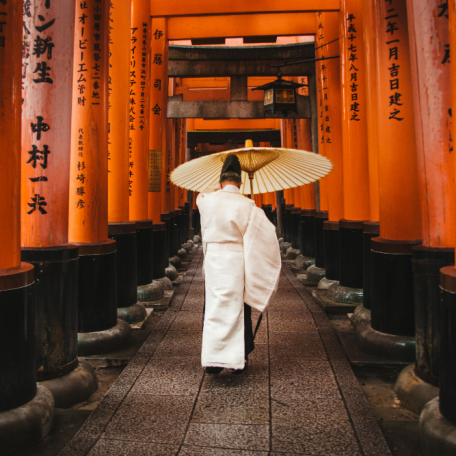A TASTE OF AUTUMN IN JAPAN: TOP 5 RECOMMENDED FOODS
Sep 23, 2021
BY Christina

As summer comes to an end, the crisp cold air in the morning reminds us that autumn is just around the corner. Japan has four distinct seasons to enjoy. The beauty of the autumn season in Japan is not only limited to sightseeing autumn foliage, but also the abundance of delicious autumn foods. For those who want to visit Japan in the autumn season, you will surely enjoy these top five seasonal foods for an unforgettable experience that you cannot find anywhere else in the world.

Photo taken from Canva
Kabocha (Japanese pumpkin)
Kabocha is sweet and has a creamy texture, making it an ideal ingredient for desserts such as kabocha pudding. Although kabocha is available throughout the year, it tastes best during autumn. One popular kabocha dish is the kabocha korokke (pumpkin croquette), which is available in supermarkets. Prepared hot and crispy, kabocha korokke is an ideal snack or side dish. Other ways to prepare kabocha is deep-fried tempura or to simply boil and dip with soy sauce. It is also a great garden decor during the Halloween season!

Photo taken from Canva
Nashi (Asian pear)
Nashi is a popular fruit in Japan during the autumn season. The fruit is low in acidity and high in sugar, making it very sweet and juicy. The sweetness of nashi makes it a great ingredient for desserts such as pies and cakes. Nashi is available seasonally in supermarkets and farmer’s markets. It can also be bought directly from the farm where it is produced.

Photo taken from Canva
Satsumaimo (Sweet potatoes)
Satsumaimo is a popular and nutritious snack during the autumn season. A traditional way of eating satsumaimo is called yakiimo (roasted sweet potato), which is prepared by roasting satsumaimo over a slow fire. Another way to prepare satsumaimo is to fry it and mix it with caramelized honey and sesame seeds. This snack is called daigaku imo (candied sweet potato), which translates to ‘college/university potato’. The origin of the name comes from the fact that the deep-fried snack was sold near the college areas of Tokyo in the 1900s. The old-fashioned taste of daigaku imo continues to be deeply loved by the Japanese people.

Kaki (Persimmons)
During autumn, this fruit can be seen abundantly in Japan, especially in the countryside. One of the most popular ways of eating kaki is called hoshigaki (dried persimmons). To make hoshigaki, peeled kaki are hung and air-dried until they shrivel and a natural sugar coating forms on their surface. Hoshigaki tastes sweet and has a chewy texture, making it a good accompaniment for green tea. Hoshigaki is available in supermarkets and michi no eki (road stations), and is a must-try autumn snack.

Photo taken from Canva
Kuri (Japanese Chestnuts)
Kuri grows abundantly during the autumn season. It can be cooked traditionally in many ways such as roasted (yakikuri) or cooked together with rice for a wonderful and nutritious meal (kurigohan).
Kuri also is a great ingredient for a variety of desserts. Kuri kinton is a candied, golden-colored dessert made with kuri and mashed satsumaimo. Kuri manju is a small, bite-sized bun stuffed with kuri and azuki (red bean) paste. The top of the bun is brushed with egg yolk and baked. Kuri manju comes in various shapes such as a round circle or a maple leaf, and is often paired with green tea.

Photo taken from Canva
Kuri yokan (chestnut jelly cake) is a traditional Japanese dessert that is rectangular in shape and made with preserved kuri and azuki paste. It is an ideal dessert that is usually served with tea after dinner.
These five hearty, warm, and sweet Japanese foods are perfect to enjoy during this wonderful autumn season.
PIN THIS FOR LATER
Learn more about the Top 5 Japanese foods in general on our online experience!
Book your pocket wifi now to stay connected through your entire Japan Journey!

Be sure to get the JR Pass to make navigating Japan during your trip that much easier!

YOU MIGHT ALSO LIKE





